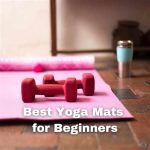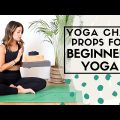Essential Yoga Equipment for Every Style: A Comprehensive Guide for Beginners and Advanced Practitioners
Yoga is an ancient practice that brings together the mind, body, and spirit. It has become increasingly popular, with various styles offering unique benefits. Whether you’re a beginner or a seasoned practitioner, having the right equipment can enhance your practice and help you get the most out of every session. This guide breaks down the essential yoga equipment tailored to different styles of yoga, ensuring you have the right tools for your practice.
Key Concepts in Yoga Equipment
- Mat: A non-slip surface is critical for safety and stability.
- Props: Blocks, straps, and bolsters enhance flexibility and support alignment.
- Apparel: Comfortable, breathable clothing allows free movement.
- Environment: Consider items like towels and essential oils for comfort and ambiance.
Understanding Different Yoga Styles
Each yoga style has its own pace, intensity, and focus, impacting the type of equipment that will best support the practice:
- Hatha Yoga: A gentle introduction to basic postures. Requires minimal equipment.
- Vinyasa Yoga: A dynamic flow linking breath with movement. A slip-resistant mat is key.
- Iyengar Yoga: Focuses on alignment, using props like blocks and straps extensively.
- Ashtanga Yoga: Physically demanding, so durable mats and towels are recommended for sweat absorption.
- Restorative Yoga: A relaxing style that uses bolsters, blankets, and eye pillows for support.
Historical Context of Yoga Equipment
Traditionally, yoga was practiced with minimal equipment. Ancient yogis performed asanas on natural surfaces like grass, with their own bodies serving as the primary tool. Over time, as yoga spread to the West, practitioners adapted by developing specialized equipment to enhance comfort and safety, leading to the wide array of props we see today.
Current State of Yoga Equipment: Innovations and Trends
The modern yoga market has expanded, offering a range of innovative products designed to cater to various styles and preferences:
- Eco-friendly Mats: Increasingly popular, these mats are made from sustainable materials like natural rubber or cork.
- Hybrid Props: Combining features, such as a block with a built-in strap, for versatile use.
- Tech-integrated Gear: Wearable technology that tracks alignment or monitors heart rate during practice.
Practical Applications of Yoga Equipment
The right yoga equipment can greatly enhance your practice, offering support where needed, improving alignment, and allowing deeper exploration of poses. Here’s how equipment benefits specific yoga styles:
For Beginners
- Mats: A thicker mat helps cushion joints, providing a solid foundation for basic poses.
- Blocks: A great tool to help beginners reach the floor in standing poses without overextending.
For Advanced Practitioners
- Straps: Straps allow seasoned yogis to deepen stretches by extending their reach.
- Balance Tools: Advanced practitioners can use wobble boards or specific props to challenge balance and stability.
Case Studies: Successful Use of Yoga Equipment
We’ve compiled several case studies showcasing how yoga equipment has helped practitioners at different levels:
| Practitioner | Yoga Style | Equipment Used | Outcome |
|---|---|---|---|
| Jane (Beginner) | Hatha | Blocks and straps | Improved posture and flexibility in foundational poses. |
| John (Intermediate) | Ashtanga | Non-slip mat, towel | Better grip and control during high-intensity practice. |
| Lisa (Advanced) | Iyengar | Props for alignment | Achieved deeper stretches and refined alignment. |
Stakeholder Analysis
Different stakeholders, from manufacturers to users, influence the yoga equipment industry:
- Manufacturers: Innovate based on user feedback, focusing on eco-friendly materials and multi-functional gear.
- Yoga Studios: Typically invest in durable, high-quality props for their clients, ensuring safety and longevity.
- Practitioners: Demand equipment that is accessible, affordable, and tailored to their specific yoga practice.
Implementation Guidelines for Choosing Yoga Equipment
When selecting yoga equipment, consider the following factors:
- Yoga Style: Determine which style you practice and choose equipment accordingly. For example, if you’re practicing restorative yoga, invest in bolsters and blankets.
- Comfort and Support: Prioritize comfort, especially for long practices or restorative sessions. Cushioned mats and supportive props are essential.
- Durability: Invest in high-quality materials, especially if you practice regularly or attend hot yoga sessions.
- Eco-conscious Choices: Opt for sustainable materials like natural rubber or cork for mats and props.
Ethical Considerations in the Yoga Equipment Industry
As the demand for yoga gear increases, ethical questions have arisen concerning environmental sustainability and fair labor practices in manufacturing:
- Sustainability: The production of synthetic mats and props has led to environmental concerns. Many brands now offer eco-friendly alternatives made from biodegradable materials.
- Labor Practices: Ethical brands ensure fair wages and safe working conditions in factories where yoga equipment is produced.
Limitations and Future Research
While the yoga equipment market continues to innovate, there are still areas that need further research and development:
- Personalization: Customizable equipment that adapts to individual body types and needs is still in its infancy. Future research could explore how to create more personalized solutions for yoga practitioners.
- Environmental Impact: Although eco-friendly materials are becoming more common, the entire lifecycle of yoga equipment (production, usage, disposal) needs further analysis to reduce the environmental footprint.
- Tech Integration: The intersection of yoga and technology is still new. Research could focus on how wearable tech can better support mindfulness and alignment during practice.
Expert Commentary
Yoga teachers, practitioners, and equipment manufacturers provide insight into the evolving relationship between yoga and the tools used in practice:
Alexandra Maynard, Yoga Teacher: “Yoga props can transform a practice, making poses accessible and safe for everyone, regardless of skill level.”
Dr. Nathan Jones, Physical Therapist: “Using the right equipment not only prevents injury but can also correct bad habits in alignment, creating a stronger, safer practice.”
Priya Kaur, Eco-friendly Mat Manufacturer: “The future of yoga gear lies in sustainability. We’re seeing a shift towards materials that respect the planet and the people making them.”








